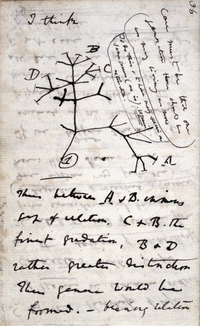
Photo from wikipedia
In China, industry produces the largest amount of CO2 emissions and, thus, is the area with the greatest potential for emissions reductions. In this paper, we calculate the CO2 emissions… Click to show full abstract
In China, industry produces the largest amount of CO2 emissions and, thus, is the area with the greatest potential for emissions reductions. In this paper, we calculate the CO2 emissions of 18 different energy sources for China's industry and subsectors from 1991 to 2015 (including indirect emissions from production processes). The LMDI (Logarithmic Mean Divisia Index) method and the Tapio decoupling model are combined to study the dynamic evolution of the characteristics and factors influencing the CO2 emissions. The changes in CO2 emissions were further decomposed into emissions coefficients, energy structure, energy intensity, CO2 emissions intensity in production processes, industrial structure, per capita output, and population size. The high energy-consumption industrial sectors were analyzed in particular. The results show that: 1) in most years, the relationship between industrial economic growth and CO2 emissions shows a weak decoupling. Only from 1996 to 1999 and 2014 to 2015 was a strong decoupling shown. 2) For the industry as a whole, the impact of per capita output on CO2 emissions was positive from 1991 to 2015. The second factor is population size, and its effect was more obvious for 2006–2015. The CO2 emissions coefficient is the most significant factor in suppressing CO2 emissions, followed by the energy intensity and the CO2 emissions intensity in production processes. In terms of CO2 emissions reduction, the effect of industrial structure and energy structure are not as obvious. 3) The proportion of high energy-consumption sectors’ emissions to total industrial emissions shows a steadily increasing trend, from 71.60% in 1991 to 90.59% in 2015; the total emissions for the Manufacture of Non-Metallic Mineral Products subsector was the highest, followed by the Smelting and Pressing of Ferrous Metals subsector.
Journal Title: Structural Change and Economic Dynamics
Year Published: 2019
Link to full text (if available)
Share on Social Media: Sign Up to like & get
recommendations!